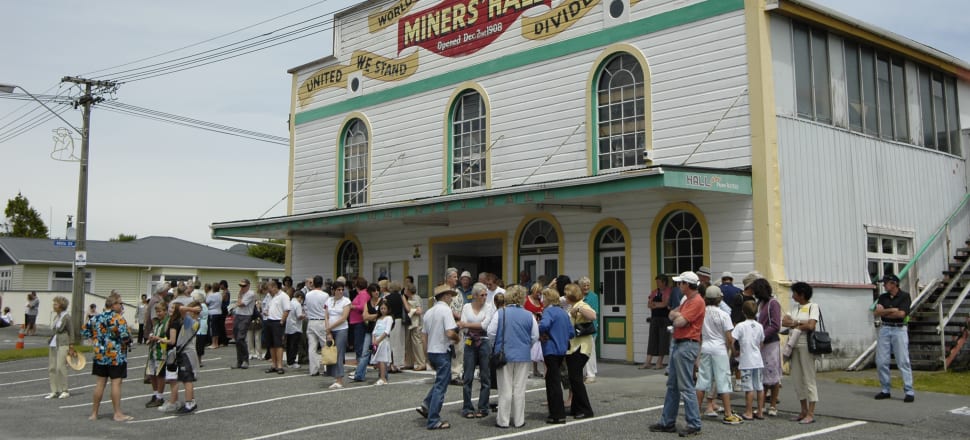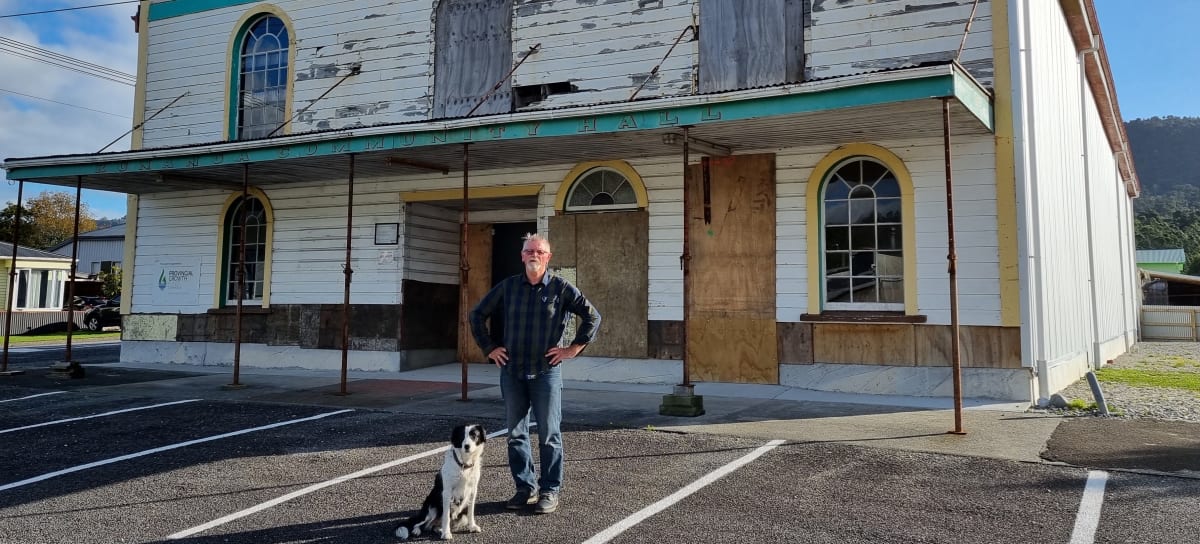
The restoration of a faded symbol of the birth of unionism in this country has been given a welcome shot in the arm
West Cost volunteers working to save the historic Runanga Miners’ Hall have had a win with more than $250,000 of Lotteries Commission cash.
A trust set up to rebuild the small town’s hall, considered the birthplace of the country’s labour movement, has been fundraising for years.
So far it’s managed to replace the roof, rebuild the foundations, restore two large walls and complete seismic strengthening work.
But despite an invitation this year to apply for Unesco World Heritage status for the building, work’s been at a standstill for months for lack of funds.
Trust chair Paul Thomas says he was elated to open an email from the Lottery Grants Board to find the trust’s application for $283,813 had been approved.
“This is a massive leap forward. Along with the Unesco nomination, it raises the profile of the project and acknowledges the significant history of the miners’ hall.”
The windfall is also a vote of confidence in those involved in the restoration project and the trust’s capacity to see it through, Thomas says.
“Now we can now go ahead and finish the outside, and fix the remaining two walls and the frontage with its famous old slogans. That means the building’s structural integrity is fully restored and that’s fantastic.”
Signs of the times
Faded signwriting on the facade still proclaims “United We Stand – Divided We Fall” and “World’s Wealth for World’s Workers”.
The trust’s historical consultant, Brian Wood, says the building is to the labour movement what the Treaty House is to the Treaty of Waitangi.
The original hall burnt down in 1908 but it was rebuilt within months in a co-operative effort by miners, business owners and local authorities
At the reopening in 1937, Paddy Webb - union leader and Minister of Mines in the first Labour government - said no town in Australasia had played a more important part in the building of the labour movement.
But despite its historical credentials and a category one heritage listing, the hall faces bureaucratic obstacles to Unesco recognition.
To be included in the international list of workers’ halls being submitted by Danish government authorities for World Heritage status, the old hall must first be listed in New Zealand as worthy of that status.
But that list, administered by the Department of Conservation, hasn’t been reviewed for years and the miners’ hall will be at the end of a long queue of proposed sites.
Bureaucratic backing
The department’s senior heritage adviser, Paul Mahoney, is offering the trust a possible way forward.
“The hall is most likely to be eligible … as an outstanding example of a building that illustrates a significant stage in human history, in this case, workers’ political power,” he has advised.
Mahoney has offered to help run a workshop in Runanga and draft a world heritage values framework, a document to inform members, councils and local members of Parliament as a first move towards gaining recognition.

Thomas says the workshop will be another significant step for the trust.
Completing the exterior work will be a major milestone, but he estimates at least $2 million more will be needed to restore the interior and a lean-to that once housed toilets and dressing rooms.
But he’s undaunted.
“It was always going to be a $5 million-project and we are looking forward to the challenge of completing it.”
The trust wants to include a cafe in the rebuild, not strictly in keeping with its history, Thomas concedes.
“But it will restore a crucial historical function. For decades, this hall was the social hub and pulse of the community and we believe it can be again.”
*Made with the support of the Public Interest Journalism Fund*








